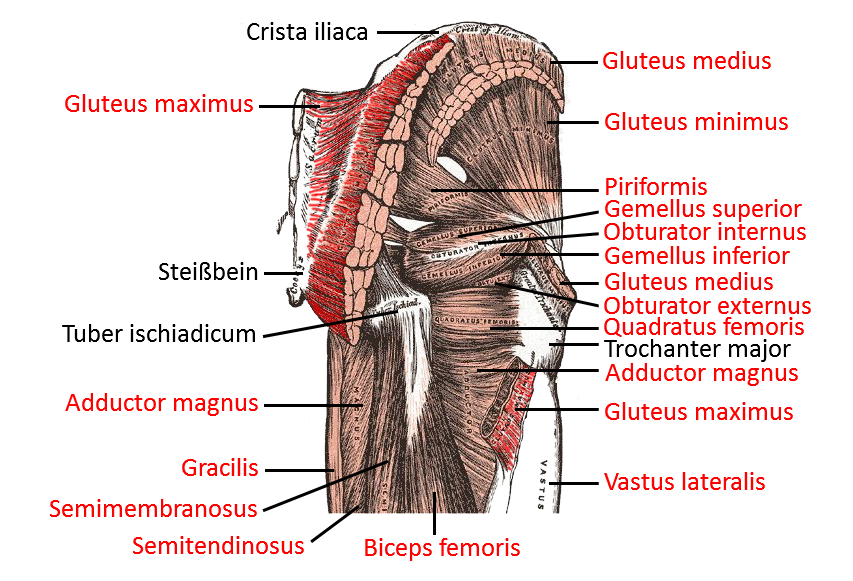yogabook / physiology of movement / dorsal hip muscles
Dorsal hip muscles / pelvitrochanteric muscles
the muscles lying more profoundly dorsal to the ilium than the gluteus maximus, which move the thigh in the hip joint. These are the following 6 muscles:
- Piriformis
- Quadratus femoris
- Obturator internus (part of the triceps coxae)
- Obturator externus
- Gemellus inferior (part of the triceps coxae)
- Gemellus superior (part of the triceps coxae)

The functions of the dorsal hip muscles are:
- External rotation of the thigh: piriformis before 60-80° of flexion in the hip joint
- Internal rotation of the thigh: piriformis beginning with 60-80° of flexion in the hip joint
- Abduction: piriformis
- Adduction: obturator internus, quadratus femoris, gemellus inferior and gemellus superior
- Extension: obturator internus, piriformis, gemellus inferior and gemellus superior and beginning with with 60-80° of flexion in the hip joint: piriformis
- Flexion: before 60-80° of flexion in the hip joint: piriformis
With the piriformis, its functional reversal should be noted: from approx. 60° flexion in the hip joint, it supports internal rotation and extension instead of exorotation and flexion below 60°.
The dorsal hip musculature is also referred to as the pelvitrochanteric musculature/muscles due to its location. Despite its similar function, the piriformis is not counted as part of the triceps coxae due to its origin on the ventral sacrum.
